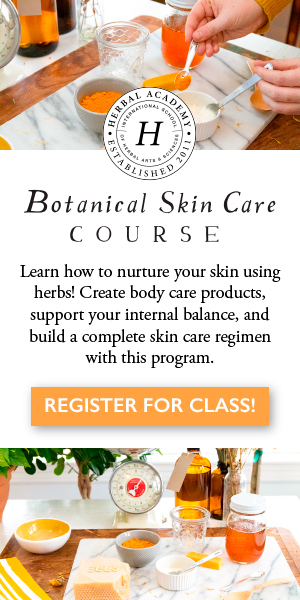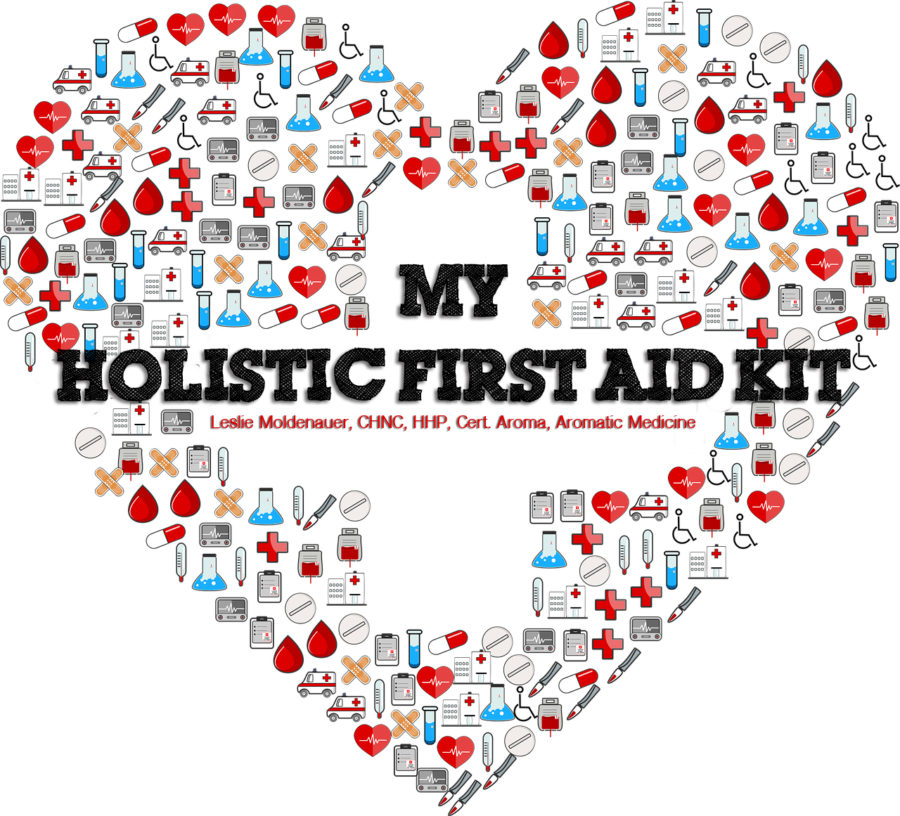
by Leslie Moldenauer | | Essential Oils, Herbs, Homeopathics
The variety of choices for a holistic first aid kit is quite exciting for the DIY’er in you and goes well beyond essential oils. Just about anything can be handled well with holistic remedies, and there are a plethora of options. I will be going over at a few of those options today. If we have the choice of handling things at home and to not have to travel to a doctor’s office where there is oftentimes a myriad of germs, let’s give it a go, right? I think it is important to understand when getting medical care is needed, but it is not always needed.
Homeopathic Medicine
What is homeopathic medicine? The word homeopathy, which comes from the Greek language, through Latin, and into English, means “like disease”. The guiding principle of homeopathy is stated as “let likes cure likes” (1). The foundation of homeopathy states that if a substance can cause disease in healthy people it will cure those same similar symptoms in sick people. It can be compared to a vaccine, without all the additives that are very much a health concern. Homeopathic medicine comes in varying strengths, but they are all considered the “minimum dose”.
“Homeopathic medicines are prepared through a series of dilutions, at each step of which there is a vigorous agitation of the solution called succus on until there is no detectable chemical substance left. As paradoxical as it may seem, the higher the dilution, when prepared in this dynamized way, the more potent the homeopathic remedy. Thereby is achieved the minimum dose which, none the less, has the maximum therapeutic effect with the fewest side effects” (2).
It is important to note that there are literally hundreds of varieties of single doses and mixed doses of homeopathy. If one type is not working for you, it does not necessarily mean that homeopathy does not work, but that you do not have the proper remedy. And much like essential oil, homeopathy is not a simple fix for any ailment; it is meant to be complementary care.
I have a homeopathic kit with me at all times of varying sizes. I have one kit in my home, one in my car and a few vials in my purse. The top remedy used in those kits is Arnica Arnica Montana. I use 30c, as it is perfect for my kids. Arnica is most often used for bruises, sprains, and inflammation. My boys are rough and tumble and both avid soccer players, so I combat large bruises by using this remedy at the time the bump happens, and a good 24 hours after.
The second vial I always carry with me is Nux vomica, also at 30c. “Strychnos nux-vomica is tree native to India and is a medium-sized tree with a short thick trunk. It is a major source of the highly poisonous, intensely bitter alkaloids strychnine and brucine, derived from the seeds inside the tree’s round, green to orange fruit” (3). When this is diluted down 10 to the 60th power, as in the case with a 30c dose, it is perfectly safe for use. But what is it used for? Nux vomica is used for overindulgence of food and drink. Have you eaten too much and are suffering from indigestion? Nux vomica is a great remedy to try.
Want to learn more about homeopathic remedies? Check out the information listed in the resources below.
*Want to know what dilution to go with? Follow this link for more information.
Herbs
I utilize my large storage space of herbs in a variety of ways in the home. I make many infused oils that sit in mason jars soaking up the summer sun like Arnica Arnica Montana, Rose Hips Rosa canina, and Calendula Calendula officinalis. During the months that the sun is a bit farther out of reach, I utilize my crock-pot on the keep warm setting. I like soaking dried calendula flowers in an apricot carrier oil, sealing in a mason jar and placing in the sun a few hours daily (With calendula and any other herbal material, make sure it is fully dry to avoid spoilage). The jar should stay in the sun for an average of 4 weeks, shake often and continually make sure that there is no moisture present. Strain well, using cheesecloth and pour into sterilized bottles. Calendula infused oil is great for inflammation and pain, as well as scrapes, scratches, burns and bites. I use this oil as a base for many of my other products as well. Calendula can be incorporated into baths, creams, compresses, washes, salves, ointments, massage oils, baths, facial steams, tinctures, and teas. It is also gentle enough to use for babies, children, or animals (4).
Infused oils are not the only way I use my herbs. Tinctures are useful winter remedies that can be used in a variety of ways. We use an Echinacea Echinacea purpurea tincture frequently throughout the winter months. I make this at home in the beginning of August by placing my raw herbal material into a small jar and covering with vodka. I shake the container every day for 3-4 weeks, strain it well and pour into a new sterilized jar. Echinacea is my first go to for the entire family at the first sign of sniffles or coughs, and is my number one weapon when my boys begin school in September. One dropper full in their fresh squeezed orange juice is a great immune booster. I typically use it for 2 weeks on and 2 weeks off throughout the winter/early spring. If someone is sick, however, I use it every day until symptoms subside. Other herbs that can be used in this way for school-aged children is Astralagus Astragalus propinquus and Goldenseal Hydrastis canadensis.
*It is important to note that Echinacea is not recommended for those with auto-immune disorders or are on medication to suppress the immune system, such as chemotherapy for example. The purpose of Echinacea is to boost white blood cells. Click here for a mention on the subject of echinacea and Lupus from the Johns Hopkins Center.
Herbs are also used as teas and decoctions (strong teas) in the home. I have a nice trio that I call my fever blend for both my kids and myself. I only reach for a true fever reducer such as Ibuprofen when my boys are completely miserable. The following trio is all diaphoretic herbs, either stimulating or relaxing, and the goal of them is to relax you as fevers make you uncomfortable and to help you sweat, but not urinate excessively causing possible risk of dehydration.
Mix equal parts:
Catnip Nepeta cataria
Chamomile Matricaria chamomilla
Lemon Balm Melissa officinalis
Use as needed (1tsp per cup of tea). Make a weak tea for children.
Follow this link to learn more about diaphoretic herbs and why they are useful for managing a fever (Bulk Herb Store).
This next remedy would definitely not be a first aid kit item for on the go, but if dehydration is a worry through a fever or flu where you or a loved one is vomiting or has diarrhea, this is a wonderful homemade concoction that everyone will love. (I do not recommend Pedialyte types of drinks). I make some the following concoction if the flu rears its ugly head in our house. It is approved by both my 9 and 11-year-old boys.
1 quart filtered water
Juice of 2-3 lemons (can add limes too if you so choose)
1/4 – 1/2 tsp. sea salt (not table salt)
1/3 cup raw honey
Not for children under 1 year of age
I typically take a small portion of that quart of water and heat it up. Add the honey and salt to that so it mixes the honey and dissolves the salt easily. Then add it to the remaining water. This tastes good and has exactly the balance you need to restore electrolytes and prevent dehydration.
* You can use pure coconut water. It works great, although it can be an acquired taste for some.
Elderberry Syrup for the Home
I am not a proponent of flu shots, so I do what I can to shorten the length of it if it happens to make its way into the home. Elderberry syrup can be purchased at your local Walgreens or CVS, but I prefer to make my own. It is easy to do, give it a try! Here is what you will need:
2 cups Elderberries Sambucus nigra dried (I prefer organic)
5 organic cloves
2 organic cinnamon sticks
1 tbsp organic raw ginger
1-2 tbsp organic dried echinacea (optional)
4 cups Purified or distilled water
Raw honey (add as much volume of honey as your liquid volume of elderberry syrup after simmering)
*Not for children under 1 year of age.
*Vegans can utilize agave syrup as a replacement for honey.
Directions:
Combine all ingredients except the honey and bring to just under a boil (do not boil). Reduce to a low simmer for about 30 minutes, mixing every 10 minutes or so. Remove from heat. Strain through a cheesecloth (I typically strain twice to make sure I get out all my herbal material). Be sure to squeeze out the juice from the berries. Measure your liquid and add an equal amount of honey. Place your pot back on a low simmer to fully soften honey and mix well. Let cool a bit then add to your glass bottles (sterilize bottles). Store in the fridge and use up within a month’s time as this has no true preservation system.
Want proof that elderberry syrup is effective? Here are a few research papers for your review:
*Kong F. Pilot clinical study on a proprietary elderberry extract: efficacy in addressing influenza symptoms. Online Journal of Pharmacology and Pharmacokinetics. 2009;5:32-43.
*Roschek B, Fink RC, McMichael MD, et al. Elderberry flavonoids bind to and prevent H1N1 infection in vitro. Phytochemistry. 2009;70:1255-61.
*Ulbricht C, Basch E, Cheung L, et al. An evidence-based systematic review of elderberry and elderflower(Sambucus nigra) by the Natural Standard Research Collaboration. J Diet Suppl. 2014;11(1):80-120.
*Zakay-Rones Z, Thom E, Wollan T, Wadstein J. Randomized study of the efficacy and safety of oral elderberry extract in the treatment of influenza A and B virus infections. J Int Med Res. 2004;32:132-40.
I utilize this syrup in any instance where the immune system needs a boost, not just for flu. It is a very effective cough remedy, too!
There are many other ways to utilize herbs in the home as a means to comfort, boost the immune system, and help encourage a speedy recovery from a variety of ailments. Check the resources below for some great reading material.
Essential Oils
I am a stickler for essential oil safety, so I will not be recommending applying essential oils to scrapes/cuts, or to use them undiluted. If your child has a scrape, a great option would be raw honey (manuka) or calendula crème from Weleda. You can purchase this European based crème at Target. Calendula will create a covering over the wound and is very effective in preventing infection and encouraging healing (5).
I keep a bottle of Lavender Lavandula angustifolia with me at all times, typically diluted to 3%. Lavender supports mental wellness, so it can be used in a variety of ways from just a simple case of grumpy gus, an overly stressful moment, or something unexpected like an accident, to bumps and bruises, burns, bug bites, and more. I usually do not use a roller bottle in this instance, as it is likely not going to be used by only one person, therefore contamination is a concern. Apply where needed. If you are utilizing it for mental wellness, inhalation is best.
At home, if there is a minor injury that has a bigger potential for bruising, I have a mixture of Helichrysum Helichrysum italicum and Kunzea Kunzea ambigua that I apply immediately to the area (Both are safe for kids). These two oils can work together to minimize bruising, reduce pain and discomfort and encourage speedy healing.
If I am at home and there is a bellyache present, I tend to use a weak tea of chamomile and peppermint to soothe and comfort. If I am away from home, I have an inhaler ready to go with essential oils such as Cardamom Elettaria cardamomum, Ginger Zingiber officinalis, and Spearmint Mentha spicata. You can rub into the belly appropriately diluted, but I find inhalation to be more effective here.
Closing
I hope that these basic ideas are helpful for you to begin to make your own first aid kit, one for home and one for when your away. There are many other things that can be utilized, what would you include in yours?
References
(1) (2) What is homeopathic medicine? Retrieved from http://homeopathyusa.org/homeopathic-medicine.html
(3) Strychnos nux-vomica. Retrieved from https://en.wikipedia.org/wiki/Strychnos_nux-vomica
(4) Healing with Calendula, (2010) Retrieved from
http://mountainroseblog.com/healing-calendula/
(5) Calendula, a wound healing herb Retrieved from
Calendula: A Wound Healing Herb
Herbal Resources
Adaptogens: Herbs for Strength, Stamina, and Stress Relief by D. Winston
Botanical Safety Handbook, 2nd ed. By AHPA (American Herbal Products Association)
Healing Wise (Wise Woman Herbal) by. S. Weed
Herbal Antibiotics, 2nd Edition: Natural Alternatives for Treating Drug-resistant Bacteria by S. Buhner
Herbal Antivirals by M. Jones
Herbal Medicines: A Guide for Health-Care Professionals by C. Newall, L. Anderson, and D. Phillipson
Herbs for Common Ailments: How to Make and Use Herbal Remedies for Home Health Care by R. Gladstar
Herbal Teas: 101 Nourishing Blends for Daily Health & Vitality by K. Brown
Medical Herbalism: The Science Principles and Practices Of Herbal Medicine by D. Hoffmann
Principles and Practice of Phytotherapy: Modern Herbal Medicine, 2e by K. Bone and S. Mills
Rosemary Gladstar’s Family Herbal: A Guide to Living Life with Energy, Health, and Vitality
Rosemary Gladstar’s Herbal Recipes for Vibrant Health
Rosemary Gladstar’s Medicinal Herbs: A Beginner’s Guide
Homeopathic Resources
Classical Homeopathy by M. Carlston
Complete Homeopathy Handbook by M. Castro
Encyclopedia of Homeopathy by A. Lockie
Homeopathy Pocket Guide by A. Brandl
Principles and Practice of Homeopathy by D. Owen
Like so many practices in life, I encourage you to become educated on the proper use of essential oils. When using them, please do so cautiously, understanding that there is often misinformation on the internet. You can be assured that I support only educated and proven resources. While essential oils should not be feared they should be respected and used properly to ensure the safety of the individuals using them.
Please note that I am not a medical practitioner. The content of this website is provided for general informational purposes only and is not intended as, nor should it be considered a substitute for, professional medical advice. Do not use the information on this website for diagnosing or treating any medical or health condition. If you have or suspect you have a medical problem, promptly contact your professional healthcare provider. By using this website, you assume full responsibility and liability for your own actions.
My Holistic First Aid Kit II
[et_bloom_inline optin_id=optin_3]
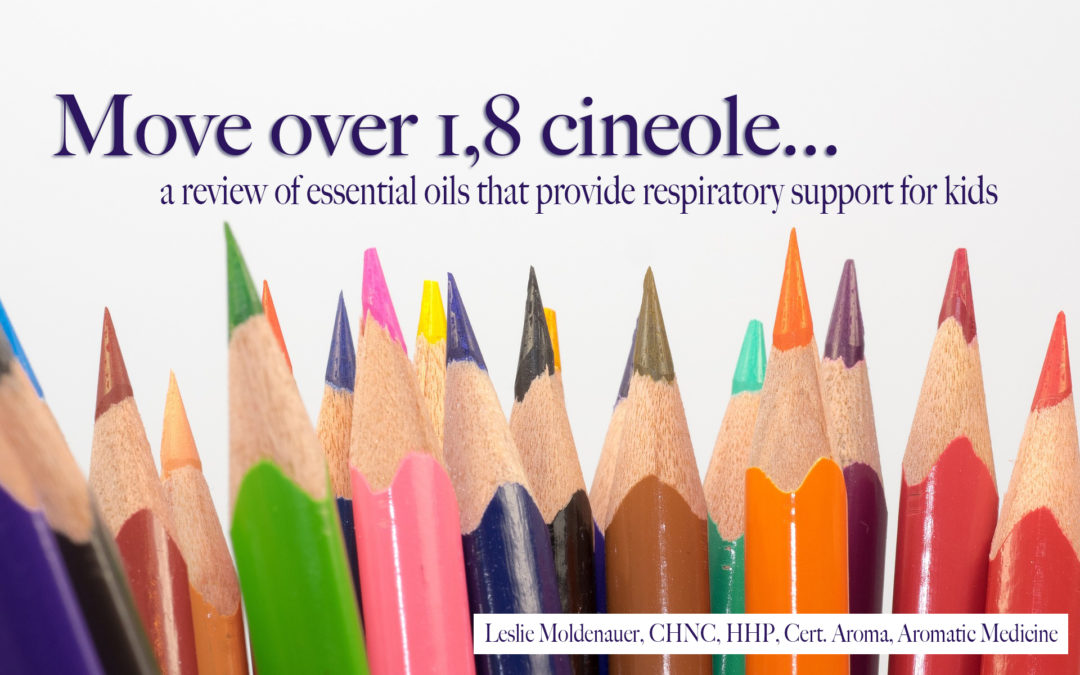
by Leslie Moldenauer | | Essential Oils
Aromatherapists have written articles about the safety of the constituent 1,8 cineole, specifically Eucalyptus radiata, Eucalyptus globulus, and Eucalyptus smithii. You’ll read plenty of articles as to why this constituent is not safe for children and not to use it at all under the age of 10. This is not, however, an accurate statement. The caution that is given from Robert Tisserand in his book entitled Essential Oil Safety 2e concerning Eucalyptus essential oil, and any other oil considered high in 1,8 cineole is to not apply on or near the face of a child under 10, (1) which is very different than do not use. No 1,8 cineole? Other respiratory essential oils for kids.
Rather than reinvent the wheel in this article and tell you why you should not be using Eucalyptus on a child, (which I believe that you absolutely can do), this article is going to speak to which essential oils are a great replacement for oils high in 1,8 cineole when your child needs respiratory system support, so you can feel confident and empowered and use these powerful tools for good.
*For more information on Eucalyptus, see the well-written article referenced below by Jade Shutes of The School for Aromatic Studies.
Now, let’s take a look at which essential oils we can use to help support the respiratory system of our children while taking the concern of 1,8 cineole out of the picture.
The first essential oil I would like to cover is Cedarwood, specifically Cedarwood Atlas:
Cedarwood Atlas: Cedrus Atlantica
Aroma: Balsamic, woody, sweet and spicy
Chemistry: Cedarwood Atlas contains approximately 50% β-himachalene, which is a sesquiterpene, and has 15 carbon atoms. Typically, sesquiterpenes have anti-inflammatory properties and can help combat germs in the home when they arrive. Follow this link to learn more about the chemistry of Cedarwood.
Cedarwood Atlas is a great oil to support respiratory wellness and is safe for kids. Cedarwood can help to reduce spasms, address spastic coughs, and is an expectorant helping to combat phlegm. It is a great aroma for fall and winter, so in a diffuser, it has a dual purpose.
Here is a great blend for your diffuser when needed:
Cedarwood Cedrus atlantica 3 drops
Cypress Cupressus sempervirens 2 drops
Sweet Orange Citrus sinensis 5 drops
*This amount is suitable for a 400ml water reservoir diffuser. Adjust accordingly.
(See more on safe diffusing below)
Fir needle or Siberian fir (one and the same) is my next recommendation. I was using this essential oil when my oldest (now 13) was responsible enough to perform a steam bowl (with supervision).
Fir Needle/Siberian: Abies sibirica
Aroma: Balsamic, camphorous, fresh, green, herbaceous, piney and soft
Chemistry: Siberian fir, mainly monoterpenes, has 10 carbon atoms and is a great stimulating decongestant and expectorant. Follow this link to learn more about the chemistry of Fir Needle.
The uplifting forest-fresh scent of Fir Needle supports a healthy respiratory system. Fir Needle helps ease congested breathing associated with typical seasonal illness. I feel this essential oil is a fantastic replacement for oils high in 1,8 cineole.
Steam Tent for Respiratory Support
Master blend
Fir Balsam 5 drops
Rosalina 5 drops
Spruce 5 drops
(See instructions and safety below for a steam tent)
Pine has a stronger aroma than Siberian Fir; it is crisper with more of a bite. I can close my eyes and imagine standing on the forest floor of pine needles when performing organoleptic testing on this gem of an oil.
Pine: Pinus Sylvestris
Aroma: Fresh, green, resinous, strong and warm.
Chemistry: Pine is a monoterpene, and it is common knowledge that monoterpenes carry a risk of oxidizing quicker than other essential oils. Proper storage is important.
Pine is known for its ability to help support a healthy respiratory tract, and in a diffuser helps to clear/cleanse the air. It is also a powerful addition to cleaning products to help purify the home. You can add Pine to Lemon essential oil in a spray bottle if Pine-sol is a scent that you love. Make sure if only using essential oils and water than you use it quickly without a preservative.
Rosalina: Melaleuca ericifolia
Aroma: Herbaceous, medicinal, robust, warm and slightly spicy.
Chemistry: Rosalina has a very unique chemistry, containing primarily monoterpenols (linalool), but also contains a small enough amount of 1,8 cineole to be perfectly safe yet effective for kids. Its properties are similar to both Tea Tree and Niaouli/Eucalyptus, and is very gentle for inhalation as well as topical application for children (2).
Open the Flood Gates (Inhaler 5 and up)
Rosalina 6 drops
Orange Sweet 6 drops
Spruce 3 drops
Place drops on the inhalers cotton wick and snap into place. Use as needed. (See safety recommendations below)
Now, let’s briefly talk about safety regarding my recommendations above…
Aromatherapy Inhalers
On average, the age recommended for aromatherapy inhalers is five and up (In line with Plant Therapy’s recommendation). There are two reasons that I agree with this recommendation. We need to assess the maturity of the child. They need to understand what they are using and why. As a parent, it is important for you to assess your child and decide if they are ready at five to handle it. If you are not sure, I recommend waiting a bit longer.
The second reason for the recommendation is that inhalers are a direct method of inhalation, whereas diffusers are considered to be a more passive method of diffusion. Less is more.
Lastly, if you are sending your kid to school with an inhaler with permission, be sure that they understand they are never to be shared with their classmates.
Diffusing (Three months and up)
Practicing safe diffusion is important for kids. If essential oils need to be used under the age of two, diffusion is my preferred method of use. Robert Tisserand recommends 30-60 minutes of diffusion at a time. For under two, 10 minutes of diffusion is likely plenty of time for them to obtain the oils therapeutic benefits. Older children two and up can likely tolerate 10-20 minutes of diffusion. In both instances, be sure to take a reasonable break of about 45 minutes to 1 hour before turning the diffuser on again. There are many diffusers with handy timers so you can set it and have peace of mind that you are not diffusing for too long.
What are the risks of over diffusing? Habituation is a concern. When you have diffused for too long a time period, you may no longer notice the aroma, but it can begin to put stress on the body rather than be beneficial. I compare this to walking into a room with someone wearing a specific perfume (assuming you do not have a negative reaction to it). You may no longer notice it after being in the room for a bit. There is also a risk of overexposure that can result in headaches, nausea, dizziness, and an overall feeling of being unwell. As parents, it is therefore important to keep diffusing times down as in many cases little kids are not going to be able to vocalize that they are feeling unwell.
*For further information on diffusing safety, see the book Essential Oil Safety 2e by Robert Tisserand and Rodney Young referenced below.
Steam Tent (Not for all ages)
Heat water on the stovetop to just before boil (be sure not to make it too hot). Pour into a stainless steel or glass bowl, place 1-2 drops of essential oil blend in the bowl and lean over the bowl, covering their head with a towel. Inhale the steam, alternating through nose and mouth as long as the steam is present (3-5 minutes). Make sure they keep their eyes closed. You can repeat every few hours as needed. Older children can lean over a plugged sink rather than a bowl if desired as it then lessens the change of spillage.
*Test the heat of the steam before you let your child try it. Always supervise as you are using extremely warm water and essential oils. Recommended for kids five and up (dependent on the maturity of the child), for the same reasons as an aromatherapy inhaler. Parents, if you feel your child is not responsible enough, please wait another year or two. Use your discretion.
For more Aromatherapy recommendation like this, I encourage you to take a look at my most recent book entitled, Aromatherapy for Kids, Safe and Sound. I briefly cover my tops 25 essential oil recommendations and includes plenty of recipes/blends for use, and as always, speaks on safety.
References:
(1) Tisserand, R. Young, R. (2014) Essential Oil Safety (2nd Ed) Churchill Livingstone/Elsevier
(2) Rhind, J. (2012) A handbook for aromatherapy practice. (p. 194)
Is Eucalyptus Safe for Children. by Jade Shutes of The School for Aromatic Studies
Like so many practices in life, I encourage you to become educated on the proper use of essential oils. When using them, please do so cautiously, understanding that there is often misinformation on the internet. You can be assured that I support only educated and proven resources. While essential oils should not be feared they should be respected and used properly to ensure the safety of the individuals using them.
Please note that I am not a medical practitioner. The content of this website is provided for general informational purposes only and is not intended as, nor should it be considered a substitute for, professional medical advice. Do not use the information on this website for diagnosing or treating any medical or health condition. If you have or suspect you have a medical problem, promptly contact your professional healthcare provider. By using this website, you assume full responsibility and liability for your own actions.
Back to School Essential Oils and More!
Essential Oil Safety-Cautions and Contraindications
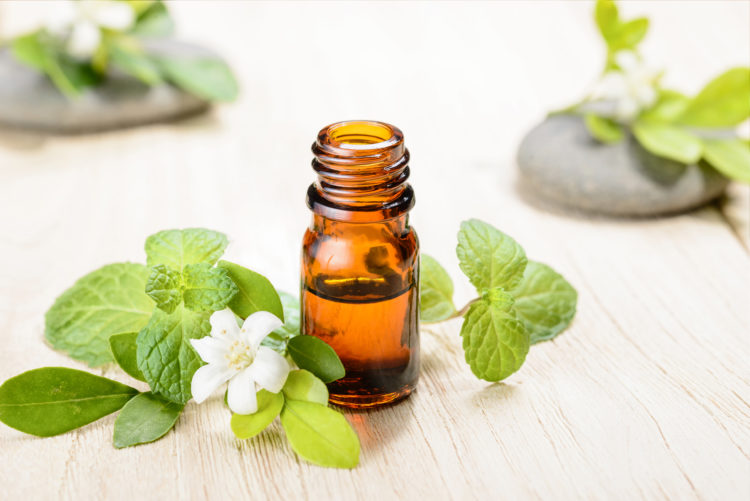
by Leslie Moldenauer | | Essential Oils
Why Is It That Essential Oils Don’t Always Work. Does this topic surprise you? It is true, there are times that essential oils do not work as we think they should, and many instances where what works amazingly well for one individual does not for another. There are a few points that I want to make today on this topic, so let’s get started!
The Modality of Aromatherapy as a Whole
Essential oils and aromatherapy are complementary. We have likely all heard this before, yes? Unfortunately too many are still using them as band-aids. The reason that they may not work as well as they should or could is this very reason. If you are using aromatherapy inhalers for example for grief and sadness…..they will absolutely be a great comfort to you. They will lessen the moments of complete overwhelm…but unless you seek out a counselor, or other professional to help you work through your feelings, have a great support system of friends, perform plenty of self-care, etc. …essential oils are only touching the surface of what they could be doing for you in this instance. This is a perfect example of complementary. Alone they do little, but together with other things, they are amazingly powerful.
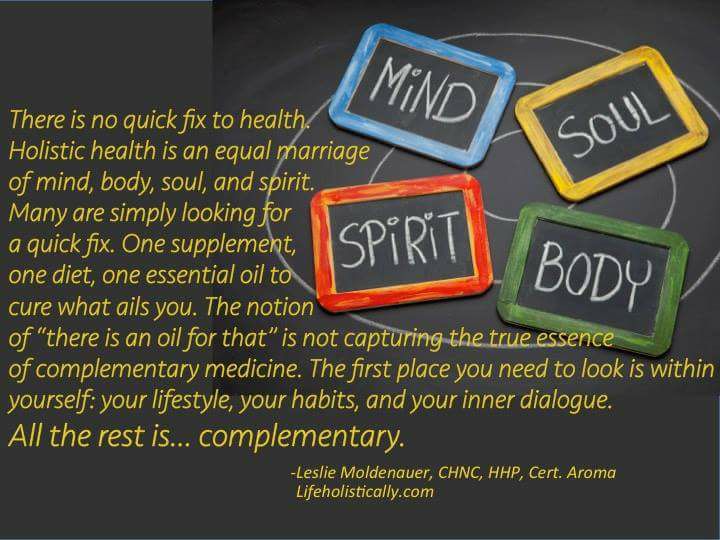
We are all Beautifully Different
I teach my aromatherapy classes with constitutions in mind. Some individuals are more prone to stress and run hot, others tend to be anxious and are always cold. You have those with weak digestive systems and others with guts of steel. Some are worriers, analyzers, and extremely sensitive, while others are in a constant state of denial about life’s problems. How this all manifests in every individual is very different, so it can begin to be easy to see how different individuals need different things.
I have made a blend in the past for what some call “monkey mind” and others call “squirrel moments” for a young boy when he lay down to sleep at night. It worked amazingly for him, but not at all for his twin brother on the bunk above. Case in point, constitutions should not be overlooked and is one of the many reasons why aromatherapists want to perform one on one consultation before making their recommendations to you.
Method of Use
In order to understand how essential oils truly work, we need to know quite a few things! What is the quickest route to the bloodstream? What is the method of absorption? What about excretion? Will inhalation help our gut? Why would we put oils on our skin topically? What is the best method of use for a cough? Allergies? Headache? Parasites? Stomachache?
Let’s look at one small example briefly. What do you think would be the most beneficial method of use for allergies? We would need to address pollen, right? What about the true histamine response that is happening systemically? Then we need to look at how the body is reacting. Is it the typical sneezing, itchy eyes and ears, watery red eyes, etc? The most popular choice (that we see in blogs and Pinterest memes) is placing oils in a capsule. The trio is usually Peppermint, Lemon, and Lavender. Does this sound like the best method of use? Would you be surprised to hear that is most definitely is not?
When looking at the true histamine reaction, essential oils internally in this way are not targeting the issue, I assure you. The best method of use here is by far going to be inhalation. A neti pot is also a good addition to target the pollen (no essential oils in the neti pot, please). In addition, addressing this issue with things such as what we are putting into our body via nutrition is paramount. Herbs are often a one, two punch for allergies.
This is a primary example of why method of use is important. You will simply not be as successful with your essential oil regimen when the least effective method is used.
Different Reactions From One Oil?
This topic can be perplexing to some. Lavender is the oil talked about the most, but I assure you it applies to more than this beautiful floral yet herbaceous essential oil. Lavender, for myself, has been a deeply beautiful “friend” that I can continue to count on. I keep some with me at all times. It can and does lower my stress level quickly, slows my heart rate, my rate of breath and I adore it. It does not work in this way for my son. I can add it to a diffuser for him along with other oils to help support a good night sleep, but Lavender itself does not garner the same reaction for him, he would say “meh”.
Read 4.4 of this research study in regards to lavender.
https://www.ncbi.nlm.nih.gov/pmc/articles/PMC3612440/
This study suggests that not only does Lavender alone not have the same reactions across the board, it shows that synergy among multiple oils is often more helpful.
Some have reported a more significant reaction to Lavender. Rather than calming or relaxing, it awakens the user, and in some instances, more pronounced reactions such as irritability and more manic feelings have occurred.
I found other reports of essential oils, such as one touted for eliminating headaches to actually cause it in others:
Do Essential Oils Cause Migraines and Headaches?
We can exhibit aggressive reactions to an essential oil or essential oil blend when it is overused as well. For example, when over diffusing essential oils adverse affect can occur. Diffusing for a short time is recommended, 30 minutes is preferred over hours and hours. If one drop works, 5 will not be better. This is why you see conservative recommendations from aromatherapists. Less is more. When overused we can see some of the symptoms below:
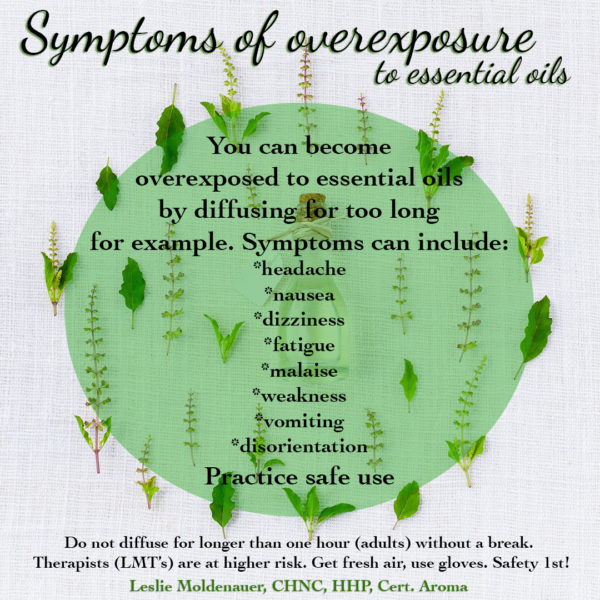
Therefore, the adverse, or opposite effect of an essential oil could perhaps be due to overuse in some cases.
For these reasons, it is important to not offer blanket statements of the therapeutic uses of an oil. I like to say something like “Historically, this essential oil has sedative properties, it is relaxing and calming. However, everyone reacts differently, so it is important to make note of how you and your family respond and make note of it for future use”. A mouthful, but I feel it is an important “disclaimer” if you will.
Closing
Hopefully, this gives you a general idea as to why what works for you, does not work the same for someone else in your home. The exciting thing about essential oils is there are so many options, with a little bit of experimentation, you can find what is right for all.
Like so many practices in life, I encourage you to become educated on the proper use of essential oils. When using them, please do so cautiously, understanding that there is often misinformation on the internet. You can be assured that I support only educated and proven resources. While essential oils should not be feared they should be respected and used properly to ensure the safety of the individuals using them.
Please note that I am not a medical practitioner. The content of this website is provided for general informational purposes only and is not intended as, nor should it be considered a substitute for, professional medical advice. Do not use the information on this website for diagnosing or treating any medical or health condition. If you have or suspect you have a medical problem, promptly contact your professional healthcare provider. By using this website, you assume full responsibility and liability for your own actions.
Resources
Atlantic Institute of Aromatherapy-Lavender
Essential Oils-Uncovering Fact From Fiction
Essential Oils-Uncovering Fact From Fiction
BEFORE YOU GO! Remember to sign up for my FREE Facebook group! Hang out with me and THOUSANDS of other Essential Oil lovers looking to learn, click on to join Real Essential Oil Education Group!
Check out my FREE offer below!
[mailpoet_form id=”2″]

by Leslie Moldenauer | | Body, Essential Oils, Mind, Spirit
What does self-care look like for you? No matter which way you slice it, more often than not we as adults struggle with self-care. Ironically enough, many of us in the healing field commonly have issues in this area. I think the reason for this is we are constantly looking to help everyone else, and women, specifically mom’s, give a whole new meaning to “martyr”.….BUT you know what they say on an airplane about putting on your own mask first, right? It is time to fill our cups first!
We may have weeks where we do really well with showing ourselves the extra love and attention we deserve, and others where it seems we can sometimes be nicer to a stranger than we our to ourselves…exaggerating, of course…or am I? I fell into a non-existent self-care routine recently. There were many reasons for this, but were they actually excuses? (And maybe this sounds familiar to you) Banish those excuses!
Self-care can mean many things to many people, but my definition would definitely be doing things for me and only me, and nothing to do with technology. So watching a movie does not count in my rulebook, nor does spending quality time with my boys. Now, quality time is equally important to me but does not qualify as self-care…hence the “self”.
So, today I just want to give you three ideas, in case you are feeling a bit lost in this area. (More blogs to follow)
“You cannot always control what goes on outside. But you can always control what goes on inside”. –Wayne Dyer
Take a Breath on the Go
Sometimes, the car is the ideal place for me to bring myself back to center as I am somewhat held hostage away from all the should’s at home: laundry, cleaning, cooking, etc etc. Practicing mindful breathing can be done with your eyes open, very successfully at that.
Before you run out of the house, grab a cotton ball or cotton round and place 2 drops of the essential oil that brings you to a calmer place. Get in your car and push it inside your air vent. Here are a few ideas, but you very likely may already know exactly what you will use:
Bergamot Citrus bergamia
Lavender Lavandula angustifolia
Mandarin Red Citrus reticulata
Orange Sweet Citrus sinensis
Sandalwood Santalum spicatum
Vetiver Vetiveria zizanoides
This 4-7-8 breathing technique was created by Dr. Andrew Weil, M.D. (See his video here: https://www.drweil.com/videos-features/videos/breathing-exercises-4-7-8-breath/) (1)
The basis of this 4-7-8 breath is truly to create awareness of conscious breathing. It works wonders, and the car is a great place to practice it. If you embrace it, the 4-7-8 breath will become a habit in no time! For those of you saying, I breathe every second of every day…so not the same. Practice it and you will be sure to notice the difference immediately.
According to Dr. Maxwell Maltz, “It takes 21 days to form a new habit”, but other research states it takes a bit longer, on average two months (2). We can all do something for two months to make a fresh new habit that fosters wellness, right!?!
“Breath is the link between mind and body”. –Dan Brule
The Lovely Bath Time Routine
Do you love to take a bath as much as I do? First things first, even though my boys are now 9 and 11, the second I hit the bathroom is still the second that they need to tell me something, are looking for something, or need something. So I work to get them involved in something first, then I head to my sanctuary.
Essential oils are a treat for me. I do not use them every day, but bath time is a must! I typically add crème as a luxury item too. Heck if throwing in some rose petals makes you feel like the goddess that you are, then definitely do that!
Here is one of my favorites:
Vanilla Rose Goddess Bath Time Blend
Rose Absolute Rosa x Damascena 3 drops
Vanilla Vanilla Planifolia Oleoresin 2 drops
Epsom salt 1 cup
Unscented fragrance free shampoo 1 tbsp
Full fat crème ½-1 cup
Mix and add to bath after water has run.
I like to light candles, and have a glass of red wine. It is up to us to totally pamper ourselves, no one else. So go all out!
Transport Yourself to a Happy Place
Are you familiar with guided imagery? This is my go to when meditation fails me. I have been meditating for over 10 years, and sometimes I still fail….we all do. Dust yourself off and move on to something else that might work. Over the years my self-care routine evolves. What used to work like a charm may not so much anymore. So when I try to sit in meditation and the monkey mind does not stop knocking, guided imagery it is.
I typically do not recommend making purchases in my blogs, but this time I am making an exception because I feel it is THAT GOOD. I am not an affiliate or getting paid to make this recommendation, I just feel it is a tool that I use, my kids use, and many of my clients use….and I have yet to hear anyone say they do not LOVE it.
The website is called Meditainment. (see link below) There are 20 audio recordings in all, complete with a beautiful voice, sounds effects, and stories with a purpose. You will be able to transport yourself to a beach, an ocean, a garden, even the moon. Well worth the investment in your health.
This is typically a time that I diffuse essential oils. For example, if I listen to the recording marked “Island Paradise”, for rapid relaxation, I will diffuse what to me says beach, tropical, and relaxation. What that is for me, may be different for you, but here is a diffuser blend to try:
Diffuser Blend (Drops appropriate for a 400ml water reservoir)
Orange Sweet Citrus sinensis 5 drops
Sandalwood Santalum spicatum 3 drops
Vanilla Vanilla Planifolia Oleoresin OR CO2 1 drop
Jasmine Absolute Jasminum sambac 1 drop
Be sure to practice safe diffusion times.
Want to know more about what the health benefits of guided imagery are? Cleveland Clinic touches on it here. (3)
“Imagination will often carry us to worlds that never were. But without it, we go nowhere”. –Carl Sagan
With the high levels of stress that most of us are under, and the turmoil in the world, self-care is crucial. What are you doing for yourself today?
References
(1) Weil, A. Video: Breathing Exercises: 4-7-8 Breath Retrieved from https://www.drweil.com/videos-features/videos/breathing-exercises-4-7-8-breath/
(2) Clear, J. How Long Does it Actually Take to Form a New Habit? (Backed by Science) Retrieved from http://jamesclear.com/new-habit
(3) Guided Imagery Retrieved from https://my.clevelandclinic.org/departments/wellness/integrative/treatments-services/guided-imagery
Resources
https://www.meditainment.com/
Like so many practices in life, I encourage you to become educated on the proper use of essential oils. When using them, please do so cautiously, understanding that there is often misinformation on the internet. You can be assured that I support only educated and proven resources. While essential oils should not be feared they should be respected and used properly to ensure the safety of the individuals using them.
Please note that I am not a medical practitioner. The content of this website is provided for general informational purposes only and is not intended as, nor should it be considered a substitute for, professional medical advice. Do not use the information on this website for diagnosing or treating any medical or health condition. If you have or suspect you have a medical problem, promptly contact your professional healthcare provider. By using this website, you assume full responsibility and liability for your own actions.
[et_bloom_inline optin_id=optin_3]
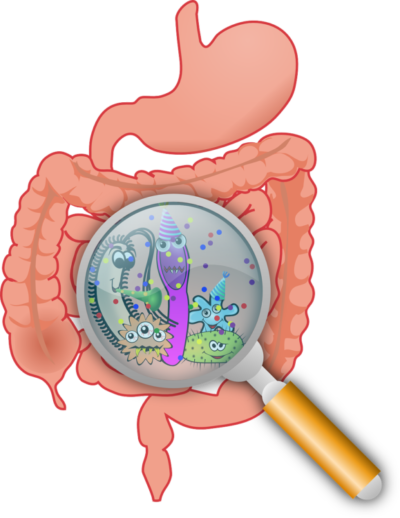
by Leslie Moldenauer | | Body, Essential Oils
Essential Oils And Our Microbiome (AKA…Our Gut Bugs). There have been many blogs stating that essential oils are great for our gut health, and that they provide us with a healthy microbiome. The issue with statements like these is that people walk away from reading these articles thinking that essential oils work much like a prebiotic or probiotic….when that has yet to be proven. With an education in Aromatic Medicine, I can see how these statements or claims are somewhat like a telephone game. My goal is to help you see what I mean by that. Let’s take a look at our gut health…one of my favorite topics, and how essential oils can play a role. It’s not what you think!
There are many things that can disrupt the function of our gut, which is also called our second brain. There is a strong relationship between the food that we eat as well as our levels of stress in regards to how our gut functions, and our overall health. Chronic stress is not our gut’s friend. Other things that effects our gut health are alcohol, antibiotics, modern day wheat, NSAID’s, and the jury is still out on GMO’s (although I believe they are detrimental on more levels of our health than we can even imagine).
When we look at how many things in modern day society is wreaking havoc on our gut microbiome, looking at statistics of how many people are dealing with afflictions such as leaky gut, dysbiosis, SIBO, Crohn’s disease, C diff, and others…it is quite dizzying how “dis” eased our digestive systems really are. Experts publish articles and books every day on this very topic, discussing what we can do to restore healthy levels of bacteria.
You see, our gut bacteria is a complex system, with good and bad forever seeking balance. Just as all of our bodies have cancer cells, and our immune systems are always working to combat these cells and “eat/destroy cancer cells” or what is termed phagocytosis, our guts always have “bad” bacteria. The goal is to keep balance. Here is previous article of mine speaking to how food and emotions play a role in our digestive health.
On to Essential Oils
You will be hard-pressed to find papers or research studies that show beyond a shadow of a doubt that essential oils provide your gut with healthy bacteria, that is not their role. Essential oils can be used to bring balance in another way. If you are suffering from too much unhealthy bacteria (overgrowth), essential oils can help! Challenges aside, as we know that essential oils being used as medicine, specifically Aromatic Medicine, is yet to be accepted here in the United States as legal by any aromatherapist OR Chiropractor, etc.. Back to the facts.
If you were suffering from SIBO (small intestinal bacterial overgrowth) or C diff (clostridium difficile colitis) for example, essential oils taken via a suppository and/or capsule can assist in killing off the bad bacteria.
This first study, looking at overall dysbiosis (a term used for overall microbial imbalance), it was found that specific essential oils can help to bring about balance by killing bad bacteria: Caraway Carum carvi, Lavender Lavandula angustifolia and Bitter Orange Citrus aurantium var. amara were the essential oils highlighted in this study. This study was performed in-vitro, which means in a test tube or petri dish, or elsewhere outside of a living organism. The essential oils tested showed to have significant antimicrobial activity. Now, those that are trained in the more advanced topics of aromatherapy know that what happens outside of the body via a test tube or petri dish does not always equate to what happens inside of the body, but this study is promising.
Other essential oils that have been shown to have antimicrobial activity are Basil Ocimum basilicum and Oregano Origanum vulgare (not an all-inclusive list).
This next study shows how the antimicrobial effects of Oregano Origanum vulgare were successful at restoring balance from Salmonella Enteritidis in minced sheep meat, again an in-vitro study. You can read the full report here.
*TIP- Do not confuse Oil of Oregano with Oregano Essential Oil. They are not the same thing, nor do they provide the same benefits in every instance.
What these studies and many more show are that essential oils can work to reduce bad gut bacteria or overgrowth to restore balance, to coax the gut back to health.
Essential oils have not been proven beyond a shadow of a doubt to wipe out good bacteria as well like we know that antibiotics do, but perhaps more importantly…essential oils do not provide our gut with good bacteria. What are a few things that do?
Bring on the Good Bugs
There are plenty of things that we can do to maintain or restore a healthy balance in our microbiome. (If you have been diagnosed with SIBO, or C diff, etc., be sure to seek out medical care). Let’s very briefly look at the top three:
1.Fermented Foods
Sauerkraut, kefir, miso, and yogurt provide us with various types of probiotic bacteria. When looking at volume consumed, you need very little of any one of these per day to obtain very large levels of beneficial bacteria.
2. Prebiotics
Any food that supplies you with healthy soluble or insoluble fiber is something to think about. Think freshly ground flaxseed, chia seed, or beans and legumes for example. You may be thinking that you are always hearing about probiotics, why prebiotics? A good way to look at it is probiotics replenish, and prebiotics nourish. They are both very much needed for gut health.
3.Probiotics
You can purchase capsules of probiotics to take every day. The number of strains per capsule is not as important as which ones you are taking for your specific situation. A great resource that covers everything gut related, including plenty of gut healthy recipes was written by a friend and colleague Lindsay Boyer entitled: The Everything Guide to Gut Health. This is one book you should definitely invest in if your gut health needs attention.
What You Should Avoid
I see both on the Internet and in social media people stating that they take Oregano essential oil in capsules every day for gut health. I hope that now you can see how that is detrimental to your gut health. IF you know you have a problem and are under the care of a trained professional, that is one thing (Someone trained in Aromatic Medicine would not suggest ongoing treatment, there is a time frame for treatment, 7-10 days for example. All dependent on the severity of the issue). Abuse of essential oils can and do cause more problems than they help.
It is equally important to not take the advice of someone who is not heavily trained. Opinions on how to use essential oils are rampant on the Internet, we must always utilize caution in what we read or are told. I am a stickler for this, even when I am given a prescription from a doctor, I ask a million questions and research the pill and it’s side effects before I take it. It is crucial you do so as well. The statement that all essential oils are natural and are therefore safe, does not hold water here.
Closing
As we can see, there are some things we do know about essential oils and our gut, but others are not yet clear. Please do look through some of the references and resources for further reading on the topic, when we know better we do better.
Papers Referenced Within the Article
Hawrelak, J. et al. (2009) Essential Oils in the Treatment of Intestinal Dysbiosis: A Preliminary in vitro Study. Alternative Medicine Review Vol. 14 No. 4 http://www.altmedrev.com/publications/14/4/380.pdf
Govaris, A. et al (2010) The antimicrobial effect of oregano essential oil, nisin and their combination against Salmonella Enteritidis in minced sheep meat during refrigerated storage. International Journal of Food Microbiology. Vo. 137. Issues 2-3 http://www.sciencedirect.com/science/article/pii/S0168160509006709
Additional Studies for Review
Gong, W. et al. (2005)Antimicrobial activity of essential oils and structurally related synthetic food additives towards selected pathogenic and beneficial gut bacteria. Journal of Applied Microbiology. p 296-305 DOI: 10.1111/j.1365-2672.2005.02789.x
Logan, A. Beaulne, T., (2002) The Treatment of Small Intestinal Bacterial Overgrowth With Enteric-Coated Peppermint Oil :A Case Report. Alternative Medicine Review. Vol.7 Number 5. http://www.altmedrev.com/publications/7/5/410.pdf
Santos, F. Miranda-Novales, M. (2012) Essential oils from aromatic herbs as antimicrobial agents. Current Opinion in Biotechnology 23:136-141.DOI 10.1016/j.copbio.2011.08.005
Further Reading
Junger, A. Clean Gut
Tetro, J. Allen Ver-coe, E. The Human Microbiome Handbook
Resources
Digestive Center for Wellness. Retrieved from https://www.digestivecenterforwellness.com/
Gut Microbiota for Health. Retrieved from http://www.gutmicrobiotaforhealth.com/en/home/
Your Digestive System: 5 Ways to Support Gut Health, via John Hopkins Medicine. Retrieved from
http://www.hopkinsmedicine.org/health/healthy_aging/healthy_body/your-digestive-system-5-ways-to-support-gut-health

Like so many practices in life, I encourage you to become educated on the proper use of essential oils. When using them, please do so cautiously, understanding that there is often misinformation on the internet. You can be assured that I support only educated and proven resources. While essential oils should not be feared they should be respected and used properly to ensure the safety of the individuals using them.
Please note that I am not a medical practitioner. The content of this website is provided for general informational purposes only and is not intended as, nor should it be considered a substitute for, professional medical advice. Do not use the information on this website for diagnosing or treating any medical or health condition. If you have or suspect you have a medical problem, promptly contact your professional healthcare provider. By using this website, you assume full responsibility and liability for your own actions.
[mailpoet_form id=”2″]
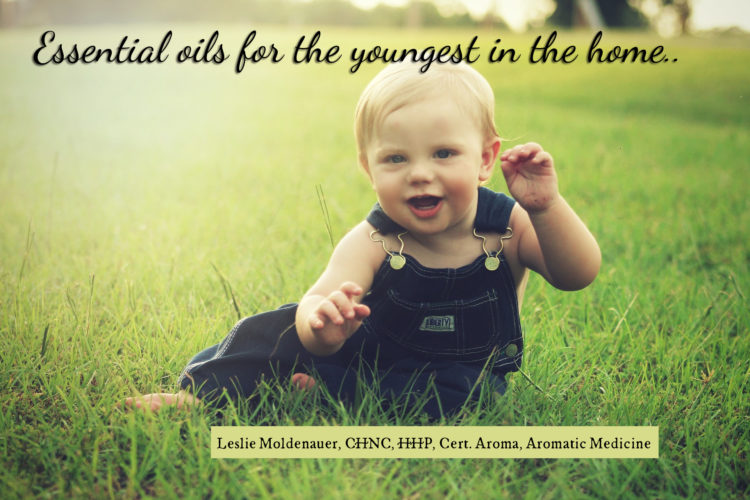
by Leslie Moldenauer | | Essential Oils
Essential oils for the youngest in the home. As someone that focuses on essential oil safety above all else, I tend to talk about why specific oils or methods of use are not safe. Today I want to shift focus to what essential oils are safe and look at them in a bit of detail. Empowering and helping are two words that are very important to me and my business…because if I do not support you to feel empowered to help your family, your children, and yourself..then what have I done? Fear is not where it’s at, so let us begin!
I am not an advocate of “never” use essential oils under the age of two, but I do recommend caution on using oils on the skin of our littlest blessings in the home. It is also important to acknowledge that other methods could be useful before automatically reaching for your oils.
Essential Oils for the Youngest in the Home
Herbs
When my boys were still little babies, I often used herbs before essential oils. Many times I was successful with herbal remedies and saved the oils for myself. Aviva Romm was a go-to for information a decade ago, as was Rosemary Gladstar. If you are interested in learning more about herbs for small children, I will list some resources at the end of this article for further study.
Elder Flowers Sambucus nigra, is great for overall immune boosting as well as to use in a weakened tea when there is a fever present.
Chamomile Matricaria recutita tea weakened down and given in very small doses is very effective for settling gassy tummies.
Linden Flowers Tilia europaea L. is soothing for a child who feels generally unwell and dehydration is a concern.
Calendula Calendula officinalis is a wonder herb for dry, irritated, rashy skin, including bums.
Of course, as with any remedy, natural or otherwise…every parent must do their due diligence and research.research,research. Herbs are a fantastic modality for even the littlest in the home.
Hydrosols
With the exception of maybe Peppermint Mentha piperita, hydrosols are a perfect choice for babies and small children. They are much gentler than essential oils, can often times be used undiluted, and come without the many cautions and contraindications that many essential oils do. Gentle, effective and safe.
By far, the two books that I recommend for hydrosol use for babies and children (and adults) are Hydrosols, The Next Aromatherapy by Suzanne Catty, and Harvest to Hydrosol by Ann Harman (see below).
Great First Essential Oils
Back to essential oils, there are quite a few that are perfectly safe for babies and small children. We always want to keep in mind that less is more, very low dilutions are always a good idea to start with. Oftentimes you will find that you need very little to be effective. I recommend using Plant Therapy’s dilution chart, found here.
I tend to recommend to my clients to avoid essential oils topically less than one year of age if it can be helped but definitely avoid for the first few months of life. I would consider their skin to be oversensitive; their skin is still very delicate.
Short periods of diffusion is likely your best bet under one year of age (10-20 minutes is a safe amount of time), and if topical use is necessary, remember to use the smallest amount possible, or reach for your hydrosols first. In addition, when diffusing make sure baby is in a well-ventilated room.
*For more information on safe diffusing and why, refer to Robert Tisserand’s Essential Oil Safety 2e.
Here are a few of the oils that I recommend as first use oils:
Chamomile Roman Anthemis nobilis
Go stand in the middle of an apple orchard and close your eyes, take a big deep cleansing breath. You are smelling Roman Chamomile. R. Chamomile is very high in esters, therefore it is a very calming essential oil. It is also very soothing to irritated skin of all varieties and is a great tummy soother.
Lavender Lavandula angustifolia
The aroma of Lavender is fresh and sweet, floral and slightly herbaceous. Lavender is superior for supporting mental wellness, promoting a good night sleep, supporting a healthy stress response, and is great to soothe sun-kissed or irritated skin.
*Special note: Lavender is a favorite of many and used often, therefore, we should pay attention to how much we are using it (As we really should with any oil we use). Less is more.
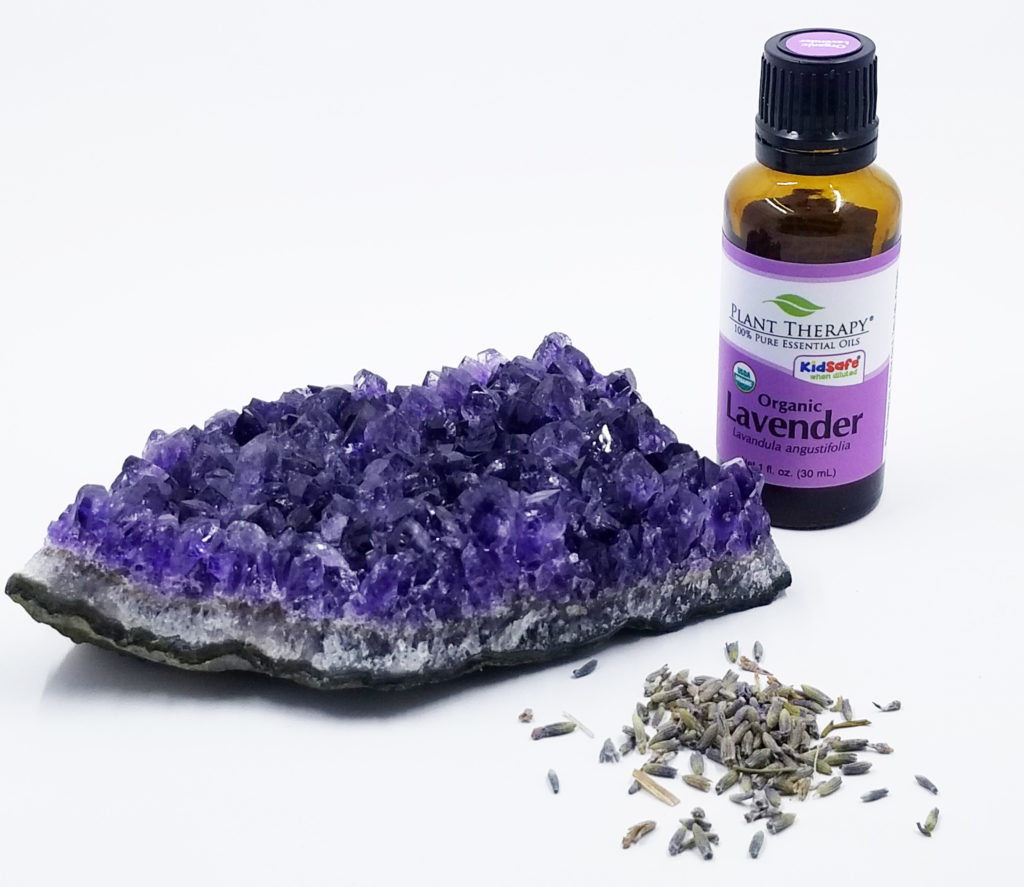
Lemon Citrus limon
Lemon smells amazzzing! Super sweet, fresh, and fruity. Due to the phototoxic risk of this essential oil, I recommend diffusing only unless you are very well-versed in how to use oils topically that are phototoxic.
Diffusing lemon essential oil is a great support for a healthy immune system. It can also be utilized in school-aged children as a pick them up to get them started in the morning, or just to alleviate “Grumpy Gus” syndrome.
Orange Citrus Sinensis
This is by far the most used oil in my household. It calms my 12-year-old like no other oil. It is known as both uplifting for the mood, yet calming on the nervous system. Lavender is often called the Swiss Army® knives of essential oils, but I can easily apply that term here as well for sweet orange. Sweet orange is not photo-toxic to the skin, yay!. A few other varieties are Bitter orange Citrus aurantium var. amara, Wild orange Citrus sinensis (L.) Osbeck and Blood orange Citrus sinensis (not all-inclusive). Steam distilled vs cold-pressed is often misunderstood when it comes to photo-toxicity. If you are unsure what you have, please reach out to your essential oil provider.
Mandarin Red Citrus nobilis
This is hands down one of my favorite citrus essential oils. Citrusy and tangy, super sweet and fresh. I would diffuse this oil when my oldest (probably 3 at the time) was going through a “Mom don’t you dare leave this room” phase. I would sit and rock him and Mandarin would have him resting in no time, but is great for all ages.
Mandarin Red is a superior, mood-lifter, and promotes all the happy go lucky feelings of being a kid. It is a great addition to a diffuser blend when under the weather, supporting a quicker recovery by providing comfort. Helps to calm thoughts so sleep can come. This essential oil is not phototoxic.
Rosalina Melaleuca ericifolia
Rosalina is herbaceous, medicinal, robust, warm, and slightly spicy.
There are even times when our little ones need assistance to push their bodies toward homeostasis. They need support. It is important to note that essential oils are not a cure, but there are times where essential oils are called on to give the immune system a little extra oompf. Rosalina can be used here.
A powerhouse for supporting a healthy respiratory system, Rosalina is a great oil for kids, has calming properties like Lavender as well as is soothing to skin bites and various irritations like tea tree. A very well-rounded essential oil, and a must-have for your wellness kit.
*Special note: If you are utilizing Rosalina between the ages of three months to one year to support a healthy respiratory system, I recommend light diffusing only. Save must-have topical use for Chamomile Roman, Lavender and Mandarin Red.
These are the first few essential oils that I do not hesitate to recommend for use (not all-inclusive). I always analyze benefit vs risk in all things. Always start with the least invasive, at the smallest dose. When we respect them and their methods of use, many essential oils are perfectly safe for even our youngest in the home.
Let me know if you have any questions, you can direct them to Lifeholistically@gmail.com. I am happy to assist, always.
Stay tuned for more information on essential oils and kids coming soon!
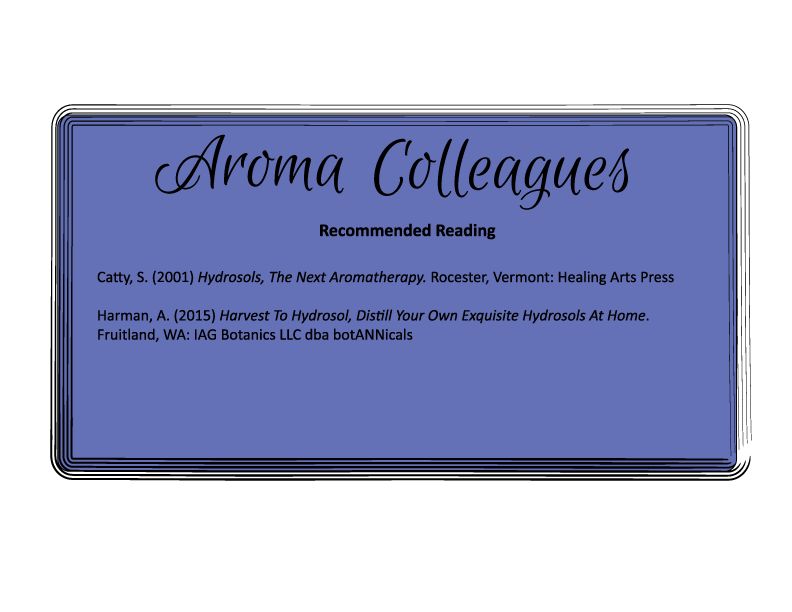
Herbal Recommendations
Naturally Healthy Babies and Children: A Commonsense Guide to Herbal Remedies, Nutrition, and Health
Rosemary Gladstar’s Herbal Recipes for Vibrant Health
Rosemary Gladstar’s Medicinal Herbs A Beginner’s Guide
Additional Resources
Petersen, D. (1986-2014) American College of Healthcare Sciences. Aromatherapy Materia Medica Essential Oil Monographs

Like so many practices in life I encourage you to become educated on the proper use of essential oils. When using them, please do so cautiously, understanding that there is often misinformation on the internet. You can be assured that I support only educated and proven resources. While essential oils should not be feared they should be respected and used properly to ensure the safety of the individuals using them.
Please note that I am not a medical practitioner. The content of this website is provided for general informational purposes only and is not intended as, nor should it be considered a substitute for, professional medical advice. Do not use the information on this website for diagnosing or treating any medical or health condition. If you have or suspect you have a medical problem, promptly contact your professional healthcare provider. By using this website, you assume full responsibility and liability for your own actions.
BEFORE YOU GO! Remember to sign up for my FREE Facebook group! Hang out with me and THOUSANDS of other Essential Oil lovers looking to learn, click on to join Real Essential Oil Education Group!
Check out my FREE offer below!
[mailpoet_form id=”2″]














